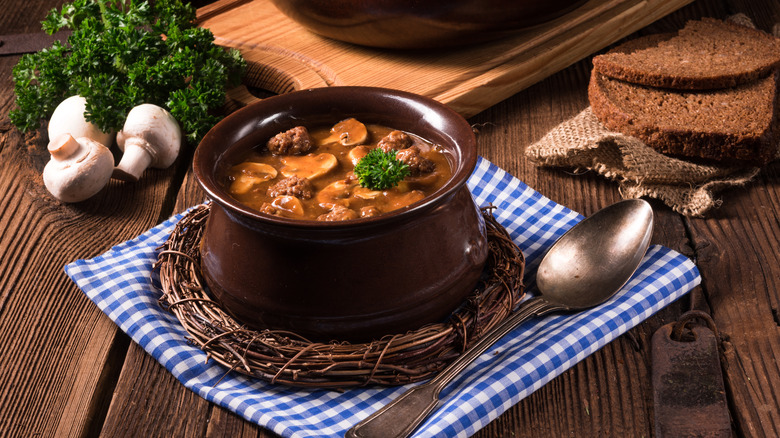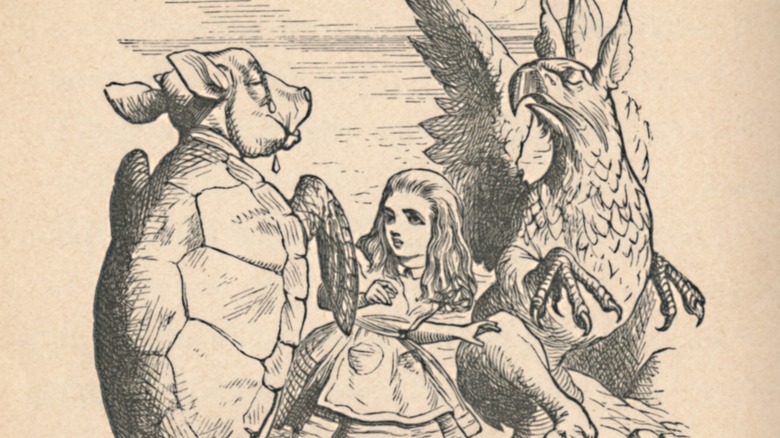The Real Reason Mock Turtle Soup Was Invented
If we were to tell you that at one point in English history, turtle — yes, actual green sea turtle — soup was among the most popular dishes of a generation, would you believe us? It is a bit beyond our modern food proclivities to imagine the consumption of sea turtles, mostly thanks to their endangerment (via World Wildlife Fund) and the anthropomorphism tendencies of the entertainment industry. Crush from "Finding Nemo," anyone?
Anyway, turtle soup, according to British Food History, was very popular in the mid-1700s. British sailors returning from the West Indies caught turtles for use as a meat source. The reptiles that made it back to England were quickly bought up by the upper classes and became a staple of banquets and dinner parties. At the peak of the trade, 15,000 turtles were being shipped to England from the West Indies every year.
British Food History continues, informing us because of its large size and the fact that the turtles were hunted to near extinction, the price of the meat was astronomical. Owing to this price, proper turtle soup was out of reach for all but the wealthiest of society. So, what was to be done? There had to be a solution, some combination of meats that would mimic the flavor of the much-prized turtles.
Enter the mock turtle
The solution, as it turns out, is mock turtle soup. The Foods of England Project defines mock turtle soup as "Soup made in imitation of the, prized but impossibly expensive, turtle-meat soup ... Usually made from calf's head and light vegetables." Cooks even went so far as to give the soup a greenish hue to mimic the green fat from the turtles. Overall, the use of the calf's head was to enhance the broth of the soup with something similar to the popular, savory flavor of the green turtle.
An original recipe, published in 1764, calls for the cleaning and boiling of a calf's head until very tender. The recipe also calls for veal, fine fowl, ham, plenty of wine, meatballs, and the yolks of hard-boiled eggs. Cincinnati Specialties explains that over the years, several different types of meat like beef organs and freshwater turtles were used in attempts to achieve that signature flavor. The use of the calf's head was eventually settled on as achieving the desired effect.
As a fun side note, Chef Heston Blumenthal's version of mock turtle soup was part of an "Alice in Wonderland" exhibit at the Victoria and Albert Museum, in London (via Fine Dining Lovers). The character of the Mock Turtle from Lewis Carrol's famous story was given its name as an homage to this unique dish.

